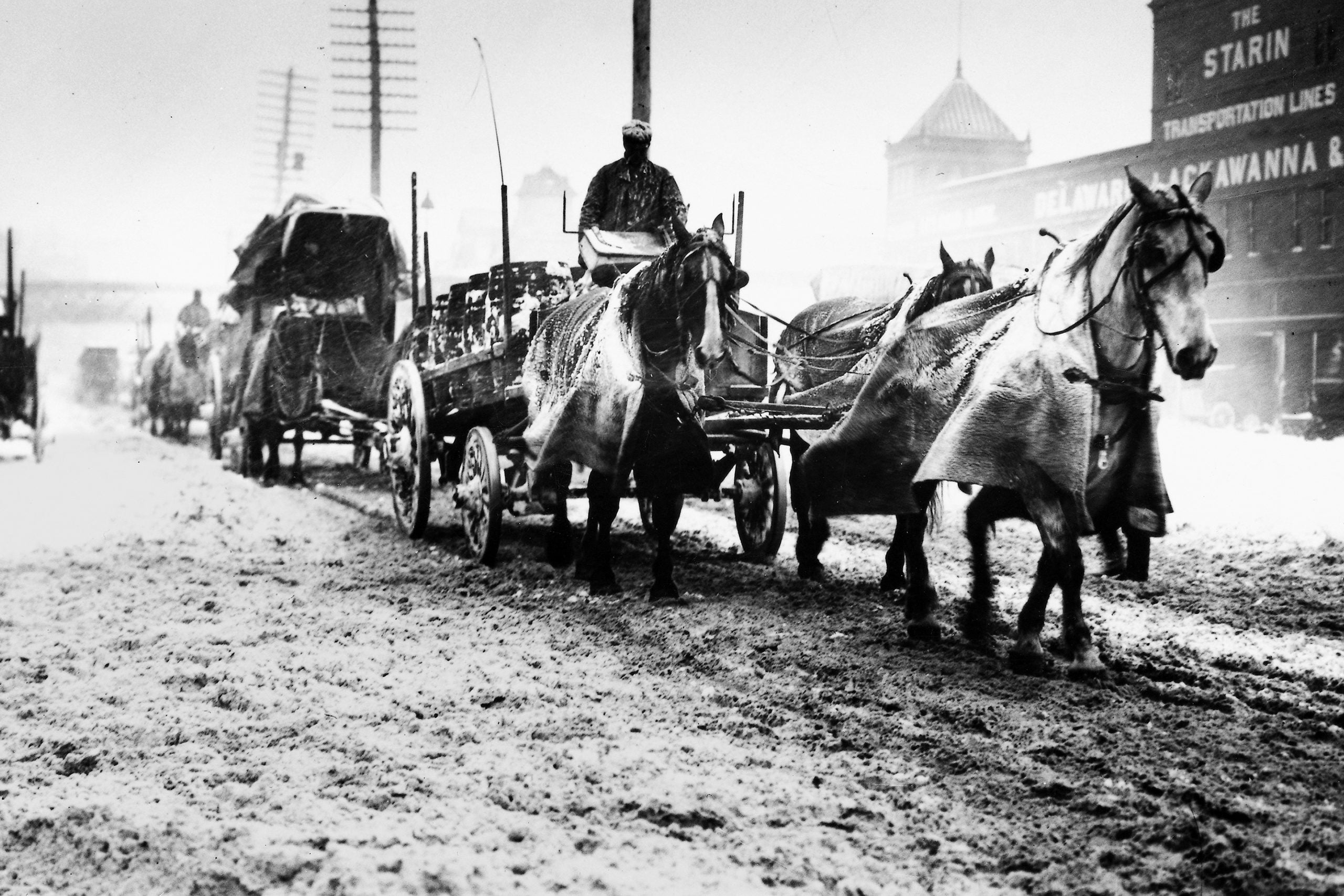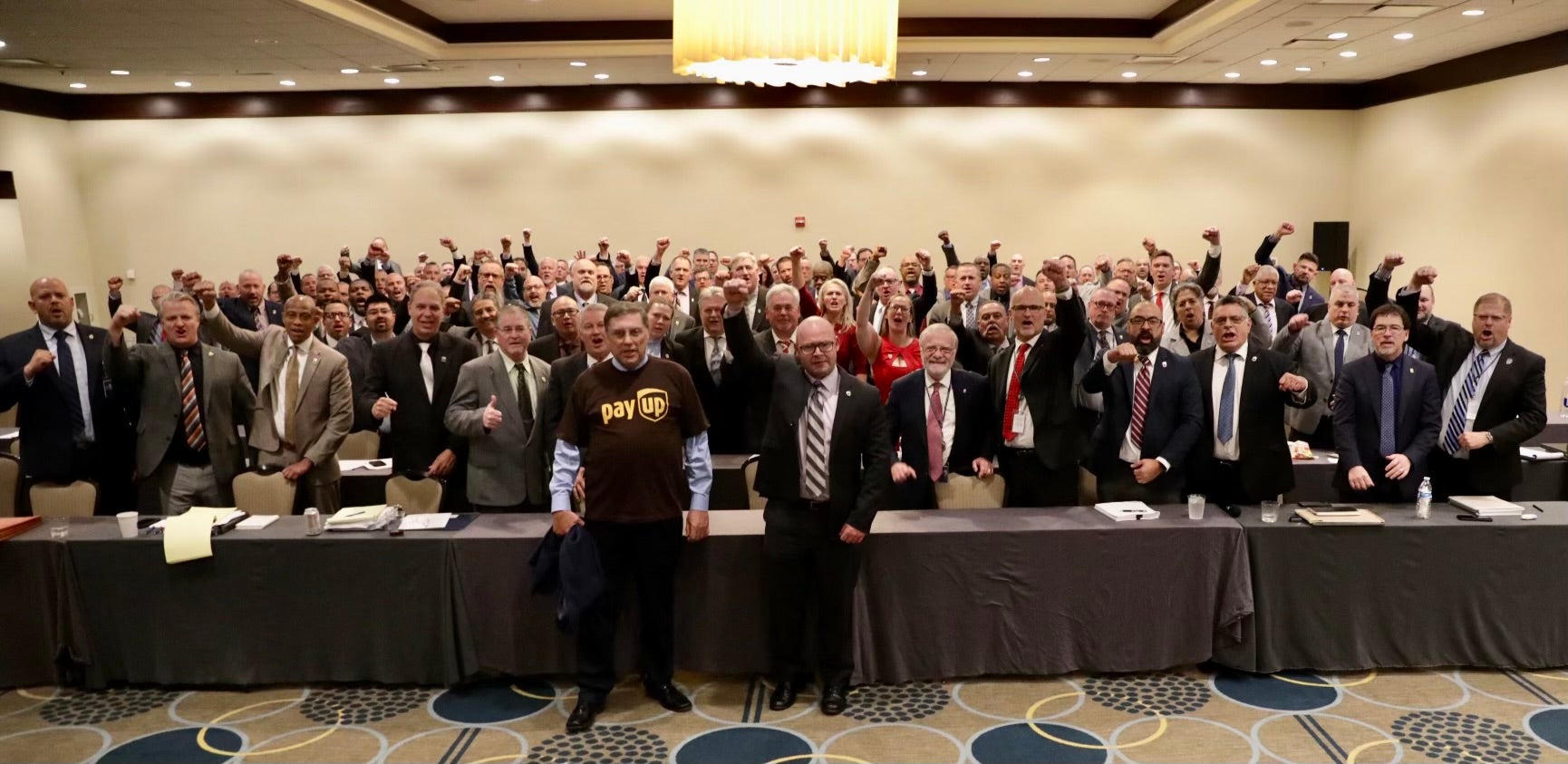If you’re wondering what’s behind the power of the Teamster title, you’re in the right place. This article demystifies the role of the Teamsters Union in securing better wages, robust benefits, and dignified working conditions for its members. We’ll journey through the union’s victories, challenges, and influence across sectors, giving you an overview of today’s teamster experience without oversharing—there’s plenty more as you read on.
 From its inception in the bustling streets of early 20th century America, the Teamsters Union carved out a reputation as a formidable force in the labor movement. Envisioning justice and fair treatment for all of its members, the Teamsters became synonymous with the fight for workers’ rights. The union’s history is not just a record of marches and strikes; it’s a narrative that intertwines with the very fabric of American history, showcasing the importance of:
From its inception in the bustling streets of early 20th century America, the Teamsters Union carved out a reputation as a formidable force in the labor movement. Envisioning justice and fair treatment for all of its members, the Teamsters became synonymous with the fight for workers’ rights. The union’s history is not just a record of marches and strikes; it’s a narrative that intertwines with the very fabric of American history, showcasing the importance of:
 The chorus of the Teamsters has always been strongest when sung in unison, and nowhere is this more evident than in the realm of collective bargaining. The union’s members, through collective action, have historically enjoyed wages significantly higher than their non-unionized counterparts—a testament to the power of group negotiation.
Through the meticulous process of organizing and uniting a workforce, the Teamsters have secured comprehensive employment agreements that clearly define secure and favorable work conditions for their members. One such landmark victory was the 1964 National Master Freight Agreement, which unified a staggering number of drivers under a single contract, dramatically improving working conditions for over 400,000 individuals.
The chorus of the Teamsters has always been strongest when sung in unison, and nowhere is this more evident than in the realm of collective bargaining. The union’s members, through collective action, have historically enjoyed wages significantly higher than their non-unionized counterparts—a testament to the power of group negotiation.
Through the meticulous process of organizing and uniting a workforce, the Teamsters have secured comprehensive employment agreements that clearly define secure and favorable work conditions for their members. One such landmark victory was the 1964 National Master Freight Agreement, which unified a staggering number of drivers under a single contract, dramatically improving working conditions for over 400,000 individuals.
 The Teamsters Union has always been an active player in the political arena. The DRIVE project, established by Jimmy Hoffa, was an early embodiment of the union’s commitment to political engagement, fostering a culture of advocacy among its members. This proactive stance continues today, with the Political and Legislative Affairs department galvanizing members to influence government policies that directly impact labor.
The early endorsement of Joe Biden for the 2020 Presidential election reflects the union’s strategy of leveraging collective labor solidarity to shape policy at the highest level. Conversations with the Biden administration have been a conduit for conveying the benefits of union membership and the challenges in labor organization. The shift in political alliances, from the Republican to the Democratic Party, is indicative of the union’s dynamic political strategy.
In 2009, this strategic political activism was evident when the Teamsters influenced the FAA Reauthorization Act to ensure fair competition against FedEx.
The Teamsters Union has always been an active player in the political arena. The DRIVE project, established by Jimmy Hoffa, was an early embodiment of the union’s commitment to political engagement, fostering a culture of advocacy among its members. This proactive stance continues today, with the Political and Legislative Affairs department galvanizing members to influence government policies that directly impact labor.
The early endorsement of Joe Biden for the 2020 Presidential election reflects the union’s strategy of leveraging collective labor solidarity to shape policy at the highest level. Conversations with the Biden administration have been a conduit for conveying the benefits of union membership and the challenges in labor organization. The shift in political alliances, from the Republican to the Democratic Party, is indicative of the union’s dynamic political strategy.
In 2009, this strategic political activism was evident when the Teamsters influenced the FAA Reauthorization Act to ensure fair competition against FedEx.
 The strength of the Teamsters Union has always stemmed from its ability to mobilize and inspire its extensive membership. With 1.3 million workers across diverse sectors, the union stands as a vanguard of the North American labor movement. The tide turned towards a more democratic approach in 1989 when the Teamsters secured the right for members to directly elect their leaders, invigorating the union with a responsive and member-driven leadership. The union’s constitution was fortified with reforms that placed rank-and-file members on bargaining committees and increased strike benefits, thereby amplifying worker control and influence.
The Teamsters for a Democratic Union (TDU) has been an impetus for greater militancy within the workforce, advocating for broader labor reforms. Confronted with the challenge of worker misclassification and the resistance of union-hostile corporations, the Teamsters have remained steadfast in safeguarding their members’ rights and representation.
The strength of the Teamsters Union has always stemmed from its ability to mobilize and inspire its extensive membership. With 1.3 million workers across diverse sectors, the union stands as a vanguard of the North American labor movement. The tide turned towards a more democratic approach in 1989 when the Teamsters secured the right for members to directly elect their leaders, invigorating the union with a responsive and member-driven leadership. The union’s constitution was fortified with reforms that placed rank-and-file members on bargaining committees and increased strike benefits, thereby amplifying worker control and influence.
The Teamsters for a Democratic Union (TDU) has been an impetus for greater militancy within the workforce, advocating for broader labor reforms. Confronted with the challenge of worker misclassification and the resistance of union-hostile corporations, the Teamsters have remained steadfast in safeguarding their members’ rights and representation.
 The benefits of being a Teamster are not mere myths but palpable realities that reverberate in the lives of its members. On average, Teamsters enjoy the following advantages:
The benefits of being a Teamster are not mere myths but palpable realities that reverberate in the lives of its members. On average, Teamsters enjoy the following advantages:
Key Takeaways
- The International Brotherhood of Teamsters have played a significant role in the American labor movement.
- Collective bargaining has been pivotal for the Teamsters, enabling members to secure higher wages, comprehensive benefits, and job security through concerted union action and strategic strikes when necessary.
- Teamster leadership continues to focus on proactive political engagement, membership recruitment, technological advancement, and international solidarity to enhance the union’s influence and adapt to changes within the labor environment.
The Evolution of the Teamsters Union
 From its inception in the bustling streets of early 20th century America, the Teamsters Union carved out a reputation as a formidable force in the labor movement. Envisioning justice and fair treatment for all of its members, the Teamsters became synonymous with the fight for workers’ rights. The union’s history is not just a record of marches and strikes; it’s a narrative that intertwines with the very fabric of American history, showcasing the importance of:
From its inception in the bustling streets of early 20th century America, the Teamsters Union carved out a reputation as a formidable force in the labor movement. Envisioning justice and fair treatment for all of its members, the Teamsters became synonymous with the fight for workers’ rights. The union’s history is not just a record of marches and strikes; it’s a narrative that intertwines with the very fabric of American history, showcasing the importance of:
- solidarity
- unity
- perseverance
- collective bargaining
The Birth and Expansion of a Labor Giant
In the nascent days of the 20th century, the International Brotherhood of Teamsters emerged with an autonomous structure, local unions at its core, steering the ship toward uncharted waters of the labor movement. It was Cornelius Shea who first took the helm, charting a course that would see the Teamsters swell in ranks, becoming a burgeoning force in the fight for fair working conditions and the dignity of working people. The union flourished under successive leaders, its growing influence paralleling its rapidly expanding membership, and solidifying its position as a true labor titan. Although the details of these reforms are buried in history, the Teamsters’ persistent efforts to uphold a clean image underscore their relentless determination to conquer any hurdle.The Power of Collective Bargaining
 The chorus of the Teamsters has always been strongest when sung in unison, and nowhere is this more evident than in the realm of collective bargaining. The union’s members, through collective action, have historically enjoyed wages significantly higher than their non-unionized counterparts—a testament to the power of group negotiation.
Through the meticulous process of organizing and uniting a workforce, the Teamsters have secured comprehensive employment agreements that clearly define secure and favorable work conditions for their members. One such landmark victory was the 1964 National Master Freight Agreement, which unified a staggering number of drivers under a single contract, dramatically improving working conditions for over 400,000 individuals.
The chorus of the Teamsters has always been strongest when sung in unison, and nowhere is this more evident than in the realm of collective bargaining. The union’s members, through collective action, have historically enjoyed wages significantly higher than their non-unionized counterparts—a testament to the power of group negotiation.
Through the meticulous process of organizing and uniting a workforce, the Teamsters have secured comprehensive employment agreements that clearly define secure and favorable work conditions for their members. One such landmark victory was the 1964 National Master Freight Agreement, which unified a staggering number of drivers under a single contract, dramatically improving working conditions for over 400,000 individuals.
Securing Benefits and Job Security through Contracts
Negotiating a contract is like planting an anchor in the stormy seas of the job market. Fueled by solidarity, the Teamsters Union has consistently established comprehensive contracts that go beyond wages, guaranteeing:- benefits
- healthcare
- retirement plans
- fair disciplinary measures
- org verify
The Role of Strikes in Shaping Agreements
However, the Teamsters are not afraid to strike when negotiations hit rough waters, using this potent weapon to shape equitable agreements. The readiness to strike against behemoths like UPS has sent a clear message of strength, enabling the union to finalize contracts that meet member demands without conceding ground. Striking is not a decision taken lightly, but when employed, as with Molson Coors, it has been a calculated strategy to secure fair terms for all. While the majority of contracts are settled amicably, the specter of the strike looms as a last resort, a testament to the union’s unwavering commitment to its members’ goals when negotiations reach an impasse.The Teamsters Today: Advocacy and Modern Challenges
As time marches on, the Teamsters Union remains steadfast in its commitment to advocacy and tackling contemporary challenges in the labor sector. The recent contract with UPS, which included wage increases and the creation of new jobs, exemplifies the union’s ongoing dedication to workplace protections. Furthermore, the Teamsters’ ability to adapt and grow was showcased by the unionization of Costco distribution drivers, a pioneering initiative spearheaded by Local 174 that may well set a precedent for similar efforts nationwide. The union’s Human Rights & Diversity Commission stands as a beacon, upholding the values of justice and equitable opportunities for every member.Embracing Political Influence for Workers' Rights
 The Teamsters Union has always been an active player in the political arena. The DRIVE project, established by Jimmy Hoffa, was an early embodiment of the union’s commitment to political engagement, fostering a culture of advocacy among its members. This proactive stance continues today, with the Political and Legislative Affairs department galvanizing members to influence government policies that directly impact labor.
The early endorsement of Joe Biden for the 2020 Presidential election reflects the union’s strategy of leveraging collective labor solidarity to shape policy at the highest level. Conversations with the Biden administration have been a conduit for conveying the benefits of union membership and the challenges in labor organization. The shift in political alliances, from the Republican to the Democratic Party, is indicative of the union’s dynamic political strategy.
In 2009, this strategic political activism was evident when the Teamsters influenced the FAA Reauthorization Act to ensure fair competition against FedEx.
The Teamsters Union has always been an active player in the political arena. The DRIVE project, established by Jimmy Hoffa, was an early embodiment of the union’s commitment to political engagement, fostering a culture of advocacy among its members. This proactive stance continues today, with the Political and Legislative Affairs department galvanizing members to influence government policies that directly impact labor.
The early endorsement of Joe Biden for the 2020 Presidential election reflects the union’s strategy of leveraging collective labor solidarity to shape policy at the highest level. Conversations with the Biden administration have been a conduit for conveying the benefits of union membership and the challenges in labor organization. The shift in political alliances, from the Republican to the Democratic Party, is indicative of the union’s dynamic political strategy.
In 2009, this strategic political activism was evident when the Teamsters influenced the FAA Reauthorization Act to ensure fair competition against FedEx.
Organizing for Strength: The Teamsters' Strategy
 The strength of the Teamsters Union has always stemmed from its ability to mobilize and inspire its extensive membership. With 1.3 million workers across diverse sectors, the union stands as a vanguard of the North American labor movement. The tide turned towards a more democratic approach in 1989 when the Teamsters secured the right for members to directly elect their leaders, invigorating the union with a responsive and member-driven leadership. The union’s constitution was fortified with reforms that placed rank-and-file members on bargaining committees and increased strike benefits, thereby amplifying worker control and influence.
The Teamsters for a Democratic Union (TDU) has been an impetus for greater militancy within the workforce, advocating for broader labor reforms. Confronted with the challenge of worker misclassification and the resistance of union-hostile corporations, the Teamsters have remained steadfast in safeguarding their members’ rights and representation.
The strength of the Teamsters Union has always stemmed from its ability to mobilize and inspire its extensive membership. With 1.3 million workers across diverse sectors, the union stands as a vanguard of the North American labor movement. The tide turned towards a more democratic approach in 1989 when the Teamsters secured the right for members to directly elect their leaders, invigorating the union with a responsive and member-driven leadership. The union’s constitution was fortified with reforms that placed rank-and-file members on bargaining committees and increased strike benefits, thereby amplifying worker control and influence.
The Teamsters for a Democratic Union (TDU) has been an impetus for greater militancy within the workforce, advocating for broader labor reforms. Confronted with the challenge of worker misclassification and the resistance of union-hostile corporations, the Teamsters have remained steadfast in safeguarding their members’ rights and representation.
The Importance of Local Organizing Efforts
The Teamsters Union fully appreciates that a union’s power often springs from the vitality of its grassroots. Local organizing initiatives are the bedrock upon which the union’s democratic control is built, with members actively involved in electing leaders and shaping policies. The Organizing Department and the Training & Grants Department play crucial roles in supporting local unions, whether through organizing programs, educational materials, or assisting in mergers. Local efforts of the union include:- Member education programs
- Contract campaigns
- Addressing immediate workplace issues
- Addressing broader community needs
Building Solidarity Across Borders
The Teamsters’ solidarity transcends national boundaries. The union’s vision has always been international, fostering connections that span across cities, languages, and districts. With the support of the Teamsters, international unionists stand shoulder to shoulder at labor events and conferences, a testament to the union’s commitment to global labor solidarity. Techniques such as practice picketing and picket line extensions, first employed by the Teamsters, are now shared with and adopted by labor organizations worldwide, furthering the Teamsters’ influence on the international labor movement.The Faces of Leadership: Guiding the Teamsters Forward
Past Presidents and Their Legacies
James R. Hoffa’s tenure as General President from 1957 to 1971 marked a ‘golden age’ for the Teamsters, with the membership reaching over 2 million workers. Hoffa’s legacy, through the James R. Hoffa Memorial Scholarship Fund, continues to impact the lives of Teamsters members’ children by providing educational grants. These past presidents, including Washington, inscribed a philosophical foundation on the union’s fabric, emphasizing unity and collective effort, which was reflected in the decentralized power under Frank Fitzsimmons’ leadership.Current Leadership and Their Agenda
The current leadership’s agenda is a comprehensive blueprint for the future. With a diverse set of departments from organizing to political affairs, strategic initiatives, and training, the leadership is poised to enhance the union’s effectiveness in key areas such as membership growth, legislative influence, and social justice. The strategic agenda is focused on empowering Teamster members by:- Strengthening collective bargaining rights
- Ramping up political lobbying
- Promoting diversity
- Expanding training opportunities
Benefits of Being a Teamster
 The benefits of being a Teamster are not mere myths but palpable realities that reverberate in the lives of its members. On average, Teamsters enjoy the following advantages:
The benefits of being a Teamster are not mere myths but palpable realities that reverberate in the lives of its members. On average, Teamsters enjoy the following advantages:
- Higher wages that are 27% more than non-unionized workers, providing a clear financial advantage
- Access to job-related health insurance, with 92% of Teamsters having coverage
